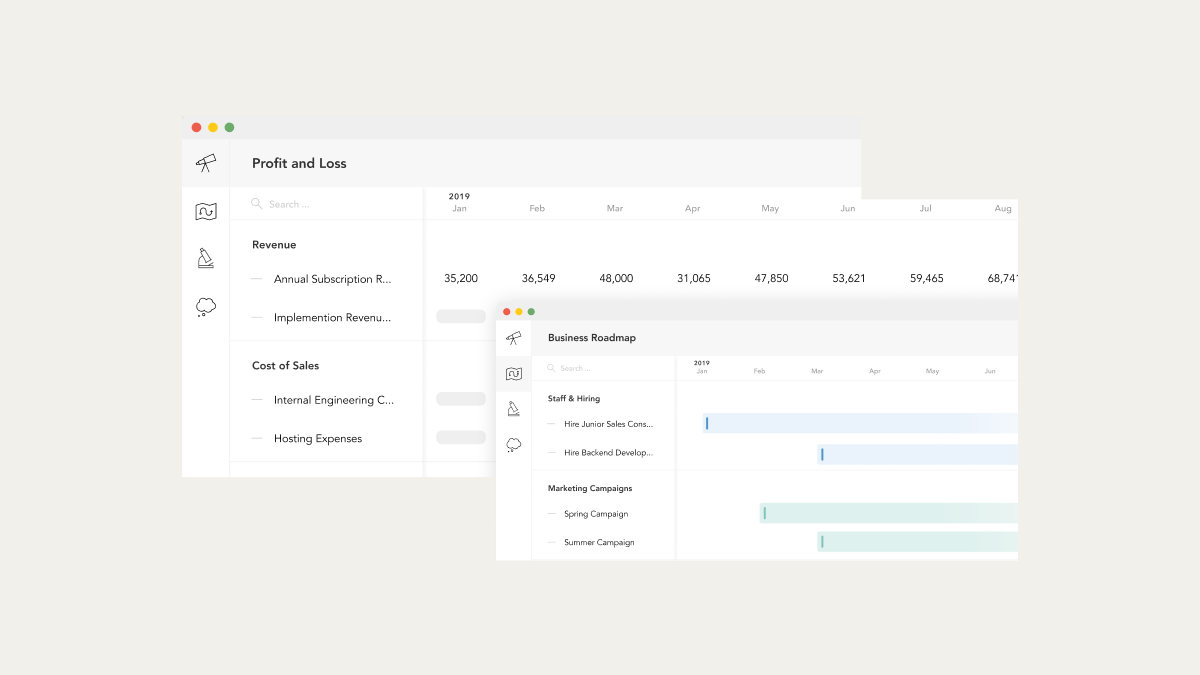Businesses are navigating increasingly troubled waters. With abrupt policy changes and increased trade complexities from import tariffs, mounting supply chain costs have become a growing issue. Accountants and advisors must now take a more significant role in helping businesses become more alert and respond to these extreme economic changes.
We understand the pressure you're under. According to a recent Fathom customer survey, nearly half (49.5%) of advisors report their clients feel less confident than they did six months ago. Now, your role goes beyond just financials, as business owners look to you for clarity and confidence in their decision-making.
As the first entry in our ‘Building financial resilience’ series, we'll cover tariff mitigation strategies and methods to prepare for rising supply chain costs. More importantly, we'll show how you can help businesses better adapt by creating smarter, forward-looking plans that keep you and your clients ahead of economic uncertainty.
Five ways to help businesses respond effectively to rising cost pressures
Here are five practical areas where you can support clients when facing the impact of rising supply costs:
- Assess risks with "what if" modelling
One of the biggest sources of frustration for business owners during economic uncertainty is not knowing how bad things will get or which parts of their business are most vulnerable. Rising tariffs often come with unpredictable cost pressures that echo through the supply chain.
That's where scenario planning redefines what’s possible. By using "what if" modelling, you can allow clients to explore the potential impact of various import tariff rates before they become a reality. Regardless of whether tariffs rise by 10%, 15%, or any other amount, modelling the real-time variations can help firms see how their gross margin, net profit, and breakeven margins may shift under different scenarios.
Solution option: With Fathom's scenario modelling, you can compare a business's normal operating performance with a range of tariff-impact outcomes. This allows businesses to visualise the possible financial effect and map out their responses well ahead of time, before the pressure hits.
- Identify cost-cutting opportunities
Once risks have been identified, the next step is to identify avenues to reduce costs while preserving capacity. Start by tracking key measures of financial performance, such as operating margin, expense ratio, and labour efficiency.
These metrics provide early warning signs of inefficiency and pinpoint areas that are ready for optimisation. For instance, automating low-value administrative work, like invoicing, can deliver long-term savings without sacrificing output. Strategic cost-cutting is not about cutting across the board. It's about precision.
Solution option: In Fathom, you can track these KPIs with trends and variances to spot underperforming cost centres over time. Fathom's reporting capabilities help visualise these insights so business owners can act confidently.
- Improve tax efficiency for cost recovery
Tariffs squeeze margins and, if left unmanaged, can increase a business's tax exposure. Many business owners do not realise the knock-on effects of tariff costs on their overall tax position. This is a good time to encourage clients to review their tax arrangements.
Are they getting the most from R&D relief or capital allowances? Could restructuring their business operations result in better tax outcomes? By seeing tax-related impacts in different circumstances, advisors can help clients spot opportunities for cost recovery and make faster, smarter tax decisions.
Solution option: With Fathom, you can model these scenarios using cash flow forecasting. Plus, Fathom's visual reports make it easy to explain these initiatives, whether you're talking to a client or confidently helping them present to their investors.
- Strengthen pricing changes with data
Adjusting and increasing prices during uncertain times can be scary. Most business owners worry that doing so will scare off consumers or bring negative publicity. However, choosing to absorb rising supply costs instead can truly drain profitability.
That's why pricing needs to be a data-driven decision, not an emotional one. Assist your client in modelling modest price increases, so they can see how those changes could improve gross margins and protect bottom-line performance.
Solution option: Consider using the Goalseek analysis tool to visualise the effects of price increases caused by tariff-driven cost hikes. Through this, building a solid, facts-based case for pricing adjustments becomes a lot easier, which can give your clients the reassurance they need to act decisively.
- Create contingency plans for cash flow
Tariff-inflated costs affect margins and place pressure on business cash flow. This can quickly lead to cash flow issues for firms that are already operating on tight budgets or have seasonal fluctuations in revenue.
Hence, contingency planning is essential. Encourage clients to prepare cash flow forecasts that assume higher input costs, slower customer payments, or increased financing needs. Stress testing different scenarios, such as lower revenues or increased supplier pricing, will effectively allow businesses to detect early gaps in their working capital and improve their procurement budgeting.
Solution option: Fathom's 3-way forecasting (profit & loss, balance sheet, and cash flow) allows you to create tailored projections for each client, illustrating how the cash flow would hold up in varying situations. These forecasts are more than just figures in a report, as they're also a great communication tool that helps clients see risk more clearly and plan accordingly.
Final thoughts
Tariffs or any other inevitable economic volatility cannot be predicted or controlled, but their financial impact can be planned. By equipping yourself with effective tools, you can better assist business owners in mitigating the effects of increasing supply costs and finding opportunities to optimise business operations.
Using an easy and beautiful solution like Fathom, you can empower clients to make smarter cuts, plan proactively, and invest where it matters most. Use Fathom’s scenario modelling, real-time forecasting, and performance insights to help businesses become more resilient to future economic disruptions.
Tariffs may be the starting point for the conversation, but the strategies you develop will keep your clients ahead of the curve.
